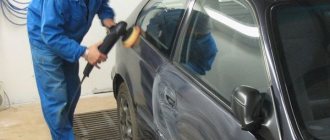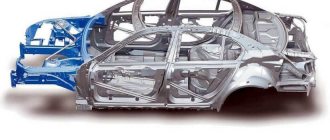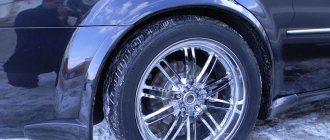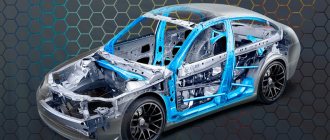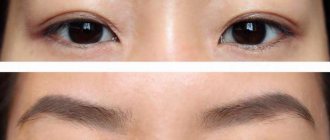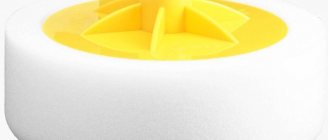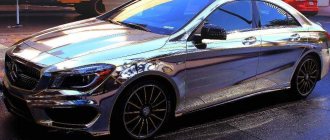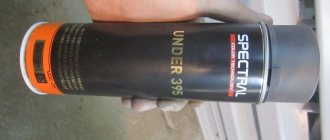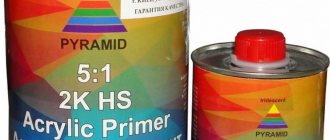Minor scratches or chips on the car body do not need to be fixed in specialized workshops, nor do you need to buy paints and putties in stores. Abrasive car polishing will do a great job with minor damage and unevenness. This action will correct the shortcomings and save a significant part of the budget. All motorists have a lot of questions about polishing technologies, related products for polishing work, costs, grinding machines and many others. The main one is the possibility of correct and high-quality polishing of a car at home.
Is it worth polishing a car with a grinder?
Minor scratches or chips on the car body do not need to be fixed in specialized workshops, nor do you need to buy paints and putties in stores. Abrasive car polishing will do a great job with minor damage and unevenness. This action will correct the shortcomings and save a significant part of the budget. All motorists have a lot of questions about polishing technologies, related products for polishing work, costs, grinding machines and many others. The main one is the possibility of correct and high-quality polishing of a car at home.
Is the game worth the candle?
The environment, trips out of town and not always high-quality road surfaces lead to cracks, chips and scratches on the body and bumpers. Exposure to direct sunlight will cause paint to fade, resulting in the need to refinish or repair your vehicle's paintwork.
There are a lot of opinions on polishing and minor repairs, and some believe that polishing a car with an angle grinder can lead to even worse results. This opinion can be called erroneous because the correct and precise approach to work and the choice of the right technology will allow you to get an excellent result.
By choosing the right materials, even the most neglected car can be restored to its original appearance. Initially, you need to determine the scope of work and select the appropriate paste and polish, among which there are several types:
- abrasive and non-abrasive - this applies to paste and polish;
- silicone polishes;
- restorative polishes.
Pastes are marked; for abrasive pastes the designations J3, J6, J7, J10 and M3 are used. Polish pastes are in demand. It is worth remembering that the polishing spray is designed to provide the final look and shine.
When preparing the body, fine sandpaper P 2000 is used. It clogs quickly, so it is necessary to frequently wet the surface with water. This fine sandpaper will get rid of deep scratches and paint chips.
Abrasive polishes are used to remove scuffs and scratches from car paintwork. Treatment with this product removes a slight layer of varnish, after which it will need to be restored. At the next stage of work, protective silicone polish is applied. It fills the smallest cracks, micro-scratches and adds shine.
In order not to perform the entire range of work manually, the car is processed with a grinder. When working, special circles are used. For grinding machines, eccentric ones with high runout speeds are chosen. It is better to purchase a professional tool, for example, from brands such as Makita or Bosch.
Metal grinding
To grind or polish a metal surface, special abrasive and polishing wheels have been developed for grinders.
Abrasive grinding wheels are designed for:
Abrasive wheels can be of petal type
or in the form of consumables for special attachments. The petal circle is made in the form of a disk with pieces of sandpaper glued on it. The grain size is selected taking into account the requirements for the surface being processed.
The flap wheel is also used for stripping paint from various surfaces and for sanding wood.
Replaceable sanding wheels are secured with Velcro to the base, which is installed on the grinder.
Also, for grinding metal, attachments made of nylon threads with a special coating are often used, and they are called Clean and Strip. These sanding attachments are flexible, do not clog, and allow you to sand in hard-to-reach areas.
Polishing attachments are designed for:
Polishing and grinding wheels are also attached with Velcro to a special attachment for an angle grinder.
First, the metal is polished with an emery wheel.
required grain size. Further, if necessary, the surface can be polished. To do this, use a polishing wheel (non-abrasive), which can be fabric, felt or foam. Wheels are used using polishing pastes
, which are applied to their surface. Typically, non-abrasive wheels are used to polish a car.
If any polishing compound is used to treat the car body, then before applying it, it is recommended to seal all the cracks around the headlights with masking tape.
For the average motorist
For minor damage, a regular grinder or hand drill will suffice. The processing circles are made of wool or foam rubber. The tool must have a speed regulator to avoid unnecessary scratches and abrasions. The desired type of paste is applied to the circle and a little to the work area.
Polishing should be done crosswise, gradually moving vertically and horizontally. This will allow you to apply the paste evenly and properly treat the surface, the main thing is that the paste does not dry out while working. Polishing is carried out until the desired shine appears. All excess paste is wiped off with a soft cloth or napkin.
After the area is polished, silicone paste is applied and the same actions are carried out with a softer circle. The whole job takes several hours. The final step is to apply a protective layer using a soft cloth or a special mitten. The layer should be distributed evenly so that there is no excess polishing left; all drips should be removed with a napkin.
Polishing Recommendations
For minor damage, a simple drill or an ordinary grinder is sufficient. The nozzle is selected based on wool, felt or foam rubber. Only when choosing such a material, a flat and smooth surface without residual deformations is obtained. In addition, the tool itself should include a mechanism for regulating the number of revolutions to avoid unnecessary abrasions and additional scratches. In this case, the paste is applied not only to the abrasive wheel, but also to the metal surface.
In this case, the polishing wheel should be moved crosswise: vertically and horizontally, which will allow you to evenly apply a layer of abrasive polishing paste for high-quality work. The main thing is that the jelly-like layer of the applied paste does not dry out, and the excess is removed with a soft cloth.
Polishing angle grinders are used to eliminate various types of defects from simple to more complex. To correctly assess which specific nozzle to choose, the following factors should be taken into account:
- complexity of the work performed;
- depth of metal damage;
- area of violation of color integrity.
To select an abrasive wheel in order to eliminate significant defects, it is recommended to pay attention to:
- fraction of sprayed abrasive;
- date of testing;
- at what temperature and humidity conditions it was stored;
- When performing a light strike with a metal object, the sound should be loud.
The polishing wheel can be made of various materials:
Before choosing it directly, you should evaluate the surface to be treated.
Advantages of the method
Such a low-cost and accessible method for every car enthusiast will allow not only corrections for minor damage, but also giving the car a well-groomed appearance. The technology is simple, and it won’t be difficult to do all the work yourself. In this way, headlights, bumpers and windows can be perfected.
When processing headlights, do not use silicone polishes. In some cases, it may be necessary to treat the headlight glasses with sandpaper R 600-800, it all depends on their original condition.
About prices
If we calculate the approximate cost of the entire amount of work, then car centers for polishing will announce a price of 150 USD. The price includes polishing with all the products offered by the center. It is not always possible to be sure of an excellent result when placing a car in the wrong hands. Moreover, many of these services do not bear responsibility.
The work done yourself will cost much less. On average, a can of polishing paste in an authorized store will cost more than 15 USD. One can is enough for five cars. Polishing wheels will cost 5 USD. If you don’t have a grinder or polishing machine, you can borrow it from friends or rent it; in extreme cases, a drill with the ability to adjust the speed will do. As a result, the total amount will be no more than 30 USD. In addition to significant savings, you will be confident in high-quality work done with your own hands.
Why polish?
Polishing may be necessary not only for minor damage or scratches. With the help of abrasive pastes and polishing agents, the car body can be kept in almost its original condition. Polishing the instrument panel, headlights and bumpers will keep it in perfect condition. The main thing is to choose the right type of product for a specific job.
Abrasives gradually remove top coats of varnish and paint; constant polishing will have the opposite effect. If there is no need to process the car body, there is no need to abuse abrasive polishing. This can result in complete removal of the paintwork, right down to the metal, which will require more expensive paint restoration, varnish application and final polishing.
How to Polish a Car with a Sander
Welcome, friends, to our homemade car repair website. Today, a car is not only a means of transportation, but also an indicator of the social status and respectability of its owner.
Pleasant to the eye color, ideal shape, shiny, completely smooth surface - such properties serve as a source of pride in your own “iron horse”.
polish correctly
car
But a car is not a decorative product that is stored only in suitable conditions, where it is not threatened by rapid deterioration of all properties.
The environment for using a car is an open place with full negative impacts, including both weather changes and a huge number of man-made and other reasons.
Traces of frequent washing, scratches acquired during careless loading or from tree branches, chips, stains can simply spoil the car owner’s mood.
However, there is an option to correct the situation by resorting to polishing - a process that results in the reconstruction or restoration of the coating.
However, not all car owners decide to carry out a similar process without the help of others, but trust only specialists from a car service center, and think that only they know how to polish
car.
In reality, any car owner will do this at home, you just need to follow the main rules, and of course listen to advice and tips.
Polishing is carried out not only for cosmetic purposes, it also includes a technical procedure that protects against damage to the enamel, leading to the formation of rust. In addition, if such a need arises, they polish the headlights and sometimes car windows.
Polishing a car with a grinder
In order to polish a car with high quality, it is not necessary to send the car for service or buy tons of expensive products in specialized stores. You can put your car in order very simply and economically - using high-quality polish, a special paste and an ordinary grinder. So, you will not only save money, but also be sure of an excellent result of the work.
Types of polishes
Even the most reliable paint coating sooner or later fades - because of this, chips and cracks appear on the surface of the car body. It is these that polishing destroys, returning your “iron horse” to its original appearance. Of course, to make the game worth the candle, you need to choose the right polish and paste:
Car body polishing products
- Abrasives. Polishing using these substances removes abrasions and scratches from the surface of the car. Remember that such products also destroy a small layer of varnish, so after polishing the car it needs to be restored. Of course, you should not overuse abrasive polishing - too frequent use of such products can destroy the paintwork of the car body;
- Non-abrasive substances. Using such products, protective polishing is carried out. In order for the car to look presentable, such a procedure must be carried out at least once a year;
- Silicone polishes. These substances fill the smallest cracks in the body and give the car a pleasant shine. They are often used in combination with abrasives to secure the polish.
Processing technology
Before polishing, the workpiece must be washed and cleaned of all kinds of contaminants. If grinding is necessary, put on an abrasive wheel and start grinding. Do not forget to wet the surface to be treated to avoid additional scratches. After sanding, wipe the surface. Apply the polish to the polishing wheel, rub it over the part and begin polishing it. To avoid overheating the surface, do not press hard on the tool and polish one area for a long time. When finished, use a soft, lint-free cloth to remove any remaining polish.
To attach polishing wheels to a hand-held electric drill, you will need an adapter and so-called “Velcro” (a backing with fasteners).
How to polish a car with an angle grinder
Despite its simplicity and economy, this method of polishing causes lively debate among car enthusiasts. Some drivers are firmly convinced that the grinder will only ruin the car, while other car owners diligently polish their vehicles using this particular tool and are completely satisfied with the result. The thing is that polishing is a very important task, so it must be done extremely carefully and carefully. Even one wrong move can ruin all your efforts.
Polishing steps:
- Preparing for work. First of all, clean the car of dirt and dust. If you don't do this, polishing will not produce the expected results and you will be wasting the substance. In addition, remove any signs of rust. Every driver knows that corrosion is one of the main enemies of a car, and untimely destruction of rust can lead to expensive repairs.
- Sanding the machine with sandpaper. Use only fine-grained sandpaper - it reliably removes all deep scratches and paint chips. Due to the degree of grain, such paper quickly clogs, so do not forget to wet the surface of the body with water from time to time.
- Using an abrasive polish or paste. The grinder for polishing must be equipped with a speed regulator - if you choose another tool, you risk severely scratching the car. Attach a polishing wheel to the grinder and apply paste to it. In addition, do not forget to drop a little product onto the working area of the car. Remember that you need to polish in a cross pattern, moving slowly horizontally and vertically. Make sure that the grinder moves smoothly - if the tool starts to slow down, spray the working area of the car with water.
- Application of silicone paste. After the surface of the machine is polished, remove any remaining paste with a soft cloth. Then apply a little silicone paste to the polishing wheel of the grinder and walk over the surface of the body.
- Applying a protective layer. At the final stage of work, you no longer need the grinder. Now you apply a little protective polish to a soft rag or a special mitten. Try to distribute the layers evenly - then there will be no excess polishing left, and drips can be easily removed with a napkin.
How to make the right purchase?
In order not to make a mistake when choosing one tool out of two, you should know exactly their functional features. Honestly, for carpentry or finishing work done on a regular basis, it is better to buy both, because the tasks are really very similar. However, today we choose one thing.
So, an angle grinder is a tool that, using a special disk rotating at high speed on a spindle, allows you to process a surface, removing the top layer from it. In this way, an effect is achieved that is somewhat identical to the work of an electric planer. An angle grinder works quickly and removes a fairly significant layer of material.
The polishing machine, as the name suggests, is designed specifically for polishing.
Roughly speaking, polishing is also the removal of the top, tarnished layer of material, but this is done very carefully so as not to damage the integrity of the product. For this reason, the number of revolutions made every minute by the disk of such a tool is significantly lower than that of an angle grinder. In addition, the polishing machine is designed to work with special compounds - polishes, which help achieve a more noticeable shine.
An angle grinder is, in fact, a professional tool, since not many people seriously engage in carpentry at home. Moreover, the final effect given by such a tool cannot be considered final - this is only primary processing, requiring further grinding.
The polishing machine is also much more often used by professionals, but its use is already quite justified at home, and we are not talking about any special skills. Since the tool is designed to work with any surface, including durable metals and fragile paintwork, it could theoretically be useful for any motorist who wants to see his car sparkling brightly. It is also possible to use it for cosmetic repairs - to give freshness to painted surfaces.
conclusions
The two types of tools are indeed very similar both in the principle of operation and in the results achieved, only the polishing machine is much more gentle. Unlike the grinder, it does not give the object a new shape, but only returns it to its original beauty and attractiveness, which makes it very popular in everyday life.
Advantages of polishing a car with an angle grinder
The popularity of this method is growing by leaps and bounds. The reason for this lies in the fact that polishing with an angle grinder has a number of advantages:
- Availability. A grinder is in every man’s tool kit, so you won’t need to purchase or rent professional tools.
- Simplicity. To polish a car with an angle grinder, you do not need to have specific knowledge or many years of experience. It is enough to do this work patiently and carefully.
- Versatility. Using a grinder, you can easily tidy up not only the surface of the body, but also the glass and headlights. By the way, when processing headlights, completely avoid silicone products. In some cases, it is necessary to use coarse sandpaper.
Pros and cons of the method
Polishing a car with a grinder has the following advantages:
In addition, when you polish your car yourself, you can be confident in the excellent quality of the work performed. The only disadvantage of this processing is the loss of your own time and effort. But it's worth it.
Some people believe that polishing with a grinder will only ruin the surface of the car. However, as practice has shown, this is not at all the case. The result exceeds all expectations. Try it and see for yourself.
Source
What should be the nozzle on an angle grinder for polishing a car?
No matter how carefully the driver operates his favorite “iron horse,” sooner or later small scratches, chips, abrasions and cracks will begin to appear on the surface of the car’s paintwork. Such damage occurs not only as a result of careless driving, but also due to small stones, branches flying towards you, temperature changes and much more. To renew and protect your car’s paintwork, all you need to do is purchase an angle grinder and select the right wheels for polishing your car.
Polishing discs have different characteristics and are suitable for different purposes, so when choosing products you need to pay attention to their types and scope of use.
Polishing wheels
Polishing wheels come in different hardnesses. Most companies make them in different colors to make them easier to differentiate. Abrasive paste with polishing wheels of different hardness will act differently on paintwork. Wool wheels have a stronger abrasive effect than foam wheels and are more suitable for correcting serious paintwork defects. However, woolen circles leave behind small circular scratches, which foam rubber ones do not. If you polish with a wool wheel with abrasive paste at high speed to remove defects, you will get a “hologram” effect. Therefore, this stage should not be the last. For more information about the choice between woolen and foam rubber circles, read the article “Wool or foam rubber circles.”
What to look for when choosing a polishing wheel
Sometimes polishing attachments are already included with polishing fluids, however, if the products are purchased separately, you need to take them into account:
- Form. There are two types of discs: surface grinding (circular) and flap (cone-shaped). In order for polishing to be carried out as efficiently as possible, it is better to purchase products of several forms.
- Rigidity. This parameter directly depends on the type of polishing paste. If the liquid is used to restore the body, then it is necessary to select more rigid polishing wheels. To choose the right disc, just pay attention to its color: black ones are considered the softest, orange ones are medium hard and are suitable for all pastes, white circles are the hardest, so they are most often used to remove the most serious scratches.
- Diameter. It is better to purchase several discs of different diameters, then it will be more convenient for you to polish different parts of the car and hard-to-reach places. Large discs are usually chosen for polishing the body, and the smallest ones for headlights.
- Mounting type. The discs can be attached to a polishing machine or a regular drill in two ways: screwed onto a thread or fixed with Velcro. The latter option is considered universal, since you do not have to select discs based on thread diameter.
When choosing a nozzle for polishing a car, it is necessary to pay the greatest attention to the material of the sanding coating, since it will depend on it for what kind of work the wheel is most suitable.
4 Sanding drums - reliable adapters for drills
In order not to risk damaging the surface when grinding with a pad using a drill and not to spend money on an expensive adapter with a variable inclination of the shank, polishing drums are used. It is a cylindrical design with a shank. A strip of sandpaper is attached to the cylinder, the ends of which are glued or loose. The grinding material is not positioned vertically, but parallel to the rotation.
To tightly connect the sandpaper to the drum, various types of tensioners are used. For tape with glued ends, a method is used to increase the diameter of the cylinder, and for tape with free ends, a special mechanism is used. For endless abrasive belts, two tensioning methods are used. Pneumatic drums are pumped up and, consisting of individual rubber elements, compressed along the axis. Open tapes are attached in different ways. The most common method is to tighten the ends with a rotating screw.
To work with sanding tape with glued ends, it is possible to make a drum yourself. It consists of several wooden disks, between which thick rubber gaskets are placed. Everything is attached with a screw. The sanding paper is pulled onto the drum and the nut is tightened on the screw. She squeezes the discs with rubber between them, which, when moved apart, securely fixes the sandpaper.
What material to choose a disc from?
Today, the market offers a wide range of car polishing attachments that help remove both small cracks and deep chips. Let's take a closer look at them.
Wool wheels
Wool discs are the most popular due to their low cost and efficiency. Such products are suitable for rough processing of paintwork.
A harder finish can be achieved using a polishing wheel made from twisted wool thread. Such products are suitable for medium-depth cracks and small defects.
Abrasive discs
Wheels made from abrasive materials are also considered hard, but unlike their woolen “colleagues”, they are more efficient and, accordingly, more expensive.
The products have these properties due to the special chemical composition of the polishing surface coating itself. More often, the abrasive layer is made of electrocorundum, chromium and silicon.
Felt discs
Circles made of felt are most often used for metal car body parts. Such products come in different types, depending on the level of wooliness of the polishing coating. For polishing, it is recommended to purchase thick-wool wheels, which work best at removing fairly deep scratches from non-ferrous metal surfaces. Fine wool circles are used the least often.
The diameter of felt discs can be from 70 to 250 mm, and the width remains the same - 25 mm.
Vulcanite (rubber) wheels
Such discs remove a thin layer of paintwork, after which the surface has a mirror shine. Therefore, vulcanite wheels are used only at the final stage of polishing, when coarser disks have already been used.
The polishing surface of the wheels is made of vulcanized rubber with the addition of abrasive components.
As a rule, only metal surfaces are treated with a rubber polishing disc at the final stage of restoration work.
Felt discs
Felt wheels are used at the stage of basic work, after rough processing, but before final polishing.
Felt products cope with most types of damage and work effectively not only on metal surfaces, but are also suitable for headlights, glass, bumpers and other body parts.
When using such a universal product, one important nuance must be taken into account - the disc must be periodically moistened in water. Then it will be several times more effective.
Also, felt discs are suitable for almost all polishing pastes, together with which they remove scratches even faster.
ZM disks
This type of wheel is used after the car parts have been coated with primer and varnish. Such products are the easiest to attach, and sometimes even used without grinding machines. By and large, ZM is a cheap consumable material for washing and dry polishing body parts made of any material.
Foam rubber is most often used as a polishing layer in such discs. When choosing foam discs, it is worth considering one nuance - the smaller the cells of the circle, the better it will polish the paintwork.
Please note that the attachment on a drill for polishing a car will be less effective compared to a disk mounted on a grinder (or as it is popularly called, an angle grinder). Therefore, let's look at some recommendations for choosing specialized equipment.
Application area
The market offers three types of grinders: household (with one handle), professional (with two handles) and industrial. Household angle grinders are the best option for short-term use at home. They are not very productive and powerful, their capabilities are limited, so they need to be turned off every 15-20 minutes. The advantages are low cost and ease of use.
A professional grinder for metal grinding is more profitable, as it has sufficient power and a wide range of functions. Its components are made of more durable materials, so it can be turned off less often. Wide discs can be used for grinding and polishing to achieve a mirror-like shine. Models with variable speed control are especially convenient.
Professional tools are used in auto repair shops and construction sites. At metal processing enterprises, industrial models that can operate almost around the clock without shutdown are preferable.
Choosing a car polishing machine
To purchase a reliable and inexpensive grinder for polishing a car, you should pay attention to the following technical parameters of the tool:
- The power of the unit should be about 1200 - 1400 W. In this case, the grinding machine will cope with more tasks.
- Please note that there is a speed control function. If you have them, you will be able to carry out all stages of polishing with the highest quality. In addition, thanks to such modes, it will be possible to process different types of surfaces.
- Availability of a compensator. Thanks to power compensation, you can change the load level while maintaining the speed of the unit. The fact is that jumps in speed (when pressing and releasing the machine) can lead to rapid overheating of the paintwork surface, which is sensitive to high temperatures.
- Smooth engine start. This function will protect you from inrush currents during long-term operation of the tool. Thanks to this mode, the machine can be turned on when it is already installed on the surface of the body. In this case, “burning” will not occur.
Comparative analysis of electrical appliances
As can be seen from the above description of electrical appliances, the functions of these tools are 98% identical.
. Both devices are used for cutting, grinding and polishing metal, wood, plastic and other materials.
Grinding machines have a wider range of divisions of work areas (flat surface, corner). Also, many models have a vacuum cleaner function, which the grinder does not have.
Often, a grinder is used as a tool for cutting various materials, while a grinder is more intended for cleaning surfaces and subsequent polishing.
It is no secret that the grinder is successfully used in the construction industry as a tool for cutting various materials, grinding surfaces, and also polishing them. A variety of attachments have been developed for the grinder, which significantly speed up and facilitate the work process when processing wood, metal, stone and concrete. In this article we will look at grinding and polishing wheels for angle grinders.
Double segment
This attachment is widely used for roughing
“wild” stone, brick and concrete walls. The cutting part of the nozzle allows you to eliminate various defects on the above surfaces, as well as cut off uneven, thick layers on concrete screeds.
It is considered a more gentle tool than the “Double segment” grinding attachment. With its help you can sand the surface more delicately.
. The tool is lightweight, has good performance and wear resistance.
Square
It is heavy and intended for roughing
and at the same time highly productive work on concrete. During operation of the tool, not only the surface is polished, but also the material is chipped. Thanks to this, productivity increases significantly and wear on the cutting elements of the nozzle is reduced.
Most often, the “Square” grinding disc is used to prepare the surface for applying various types of polymer coatings. This fact is explained by the fact that this attachment does not have a pronounced grinding effect. The surface after processing with the “Square” tool remains rough, which increases adhesion to polymer compounds.
Polishing a car with a grinder, necessary materials and equipment.
Perfect polishing of a vehicle body can be accomplished if you have specialized equipment. With the right selection of tools for this process, it is possible to get not only a good result of the work, but also save your money. The choice of the necessary materials, compositions and tools needed to perform the treatment directly depends on the quality of the procedure performed. Also, when polishing yourself, when there is no special room, you will need auxiliary means to protect the body being processed. To perform effective polishing, it is not necessary to take your car to a workshop or purchase overly expensive products. You can process the car in a simple and economical way: using a high-quality polishing compound, specialized paste and an ordinary grinder. Polishing a car with a grinder is carried out with specific attachments for this tool. If there are defects on the paintwork of a car (scratches, cracks, chips), then abrasive attachments with varying degrees of grain size are used. They are used when grinding the surface of the body, periodically moistening them. To clean the surface before polishing and for final polishing, felt attachments in the shape of a cylinder or flat are used. If there are scratches, foam rubber circles are used to remove them. They differ in degree of rigidity.
Each attachment is used for a specific polishing paste depending on its grain size. The softest wheel is used for non-abrasive polishing, and the hardest wheel is used for coarse abrasive polishing. How seriously the defects damaged the paintwork is determined visually. If the damage is deep, then polishing alone will not do; puttying is required, and then local painting of the cars. To add shine and gloss, sheepskin attachments are also used. But they are used mainly for final polishing. You can purchase such attachments at auto markets or specialized stores.
How to polish a body with a grinder.
Polishing a body with an angle grinder is not a complicated and economical polishing method, but car owners have different opinions about this. Some car enthusiasts claim that such a tool will ruin the car's coating, while others are completely satisfied with the result of the treatment. Polishing is a responsible and painstaking procedure, so it should be done very diligently and carefully. Polishing a car with a grinder yourself occurs in several stages:
1. Preliminary work. First of all, you should wash the car and clean it of dirt, stains and dust. You should also eliminate corrosive deposits, as everyone knows that rust causes great harm to any vehicle, and if it is not eliminated in time, then you will have to carry out expensive body repairs.
2. Surface treatment with abrasive sandpaper. Fine-grained sandpaper is used as it is better at removing large damage. From time to time it is necessary to moisten the surface of the car with water, as the skin quickly becomes clogged.
3. Use of an abrasive agent (paste, polish). A grinder for polishing must have a speed adjustment, since it is much higher on this tool. You should use it very carefully so as not to scratch the paintwork. It is necessary to fix the polishing circle on the grinder and apply the product to it. You need to polish crosswise, smoothly moving the tool. If the grinder begins to slow down, it is necessary to moisten the surface with water.
4. Using silicone-based paste. After polishing is completed, any remaining paste particles should be removed with a lint-free cloth. Then, you need to spread a small amount of silicone paste over the body surface using a grinder.
5. Protective coating. The final stage takes place without the use of an angle grinder. The protective agent is applied to the surface with a special napkin. The paste should be distributed evenly and in an even thin layer so that no excess polish remains.
Polishing a car with a grinder, advantages.
The popularity of this method is gradually increasing, since polishing a car with a grinder has certain advantages:
- Public tool. Almost every man has this tool in his arsenal. You don't have to spend money on buying it or renting it.
- It's easy, quick and simple to polish with a grinder. It is not necessary to have the relevant knowledge and extensive experience. The main thing is to perform the processing carefully and carefully.
- A universal tool. With a grinder you can treat the surface of the body, glass and headlights. When processing headlights, you should not use silicone products; you can only use abrasive sandpaper with a coarse grain size.
You can always contact our company for help. Our specialists will perform the processing quickly, efficiently and at an affordable price. Reviews of our work can be viewed on our website.
Communities › Kulibin Club › Forum › Differences between an angle grinder and a polishing machine.
Please tell me. What are the design differences between a polisher and an angle grinder? Is it possible to turn one into the other just by replacing the gearbox?
On the polishing machine the speed is regulated.
In Bulgarian too
take both in your hands and you'll have it.
The grinder tears violently from its place - the polishing pad and even the backing fly apart... The machine has a smooth start, a powerful motor and gearbox - more powerful than on the grinder, the load compensator presses harder - the grinder goes off at low speeds, and the polisher continues to turn at the set frequency.
I understand everything, the main difference between an angle grinder and a polisher is the gearbox?
No. Compensation and smooth start. The rest is secondary.
Compensator, as I understand it, is an electronic device based on a hall sensor that maintains a given speed?
Yes. When the car goes out, it gives it power... And it continues to maintain the same speed
Well, that’s understandable, I’d like to know about the motor itself, are there any differences?
I think no. Well, maybe collector/collectorless.
Although I may be wrong about the powerful motor... Makita has 1200 watts of power. In short, it seems to me a gearbox and a smooth start. And the limit is 3000 rpm maximum. Plus autopilot modes - 700 rpm, 1200/1500, etc. You set it and it doesn’t twist this threshold.
In short, there is an angle grinder, they gave it away for spare parts, 1 kW, I want to make a polisher out of it))
I have 3 grinders. And I started polishing headlights and small things with a grinder... In short, the increased consumption of polishing pads, which are expensive branded ones, got to me and I bought a polishing machine this year. There is a choice from 3 tr. But you must take it with a compensator and an autopilot regulator... This is if you want some kind of quality at the output... Plus, there are polishing machines with an eccentric - this is now the pinnacle of car polishing - without halograms. It works smoothly and does not tear the foam itself. I haven’t tried it in combat yet, so I plugged it in once... I’m preparing it to match the color of the car, and I’ll try it there...
In short, there is an angle grinder, they gave it away for spare parts, 1 kW, I want to make a polisher out of it))
improvements are needed, the electronics must be installed with regulation and maintenance of speed, a heap of smooth start, there will be protection. On TDA1085 (used in washing machines)
or U2010B and polish to your health) In general, such options are not uncommon for grinders, although the price and speed range starts from 2800-3000 rpm, but this is a matter of setting www.vseinstrumenti.ru/ins...46][type]=check# searchRes simply if the grinder blocks the possibilities of polishing, then how will a capitalist and speculator sell polishing...) Profit is primary under capitalism)
